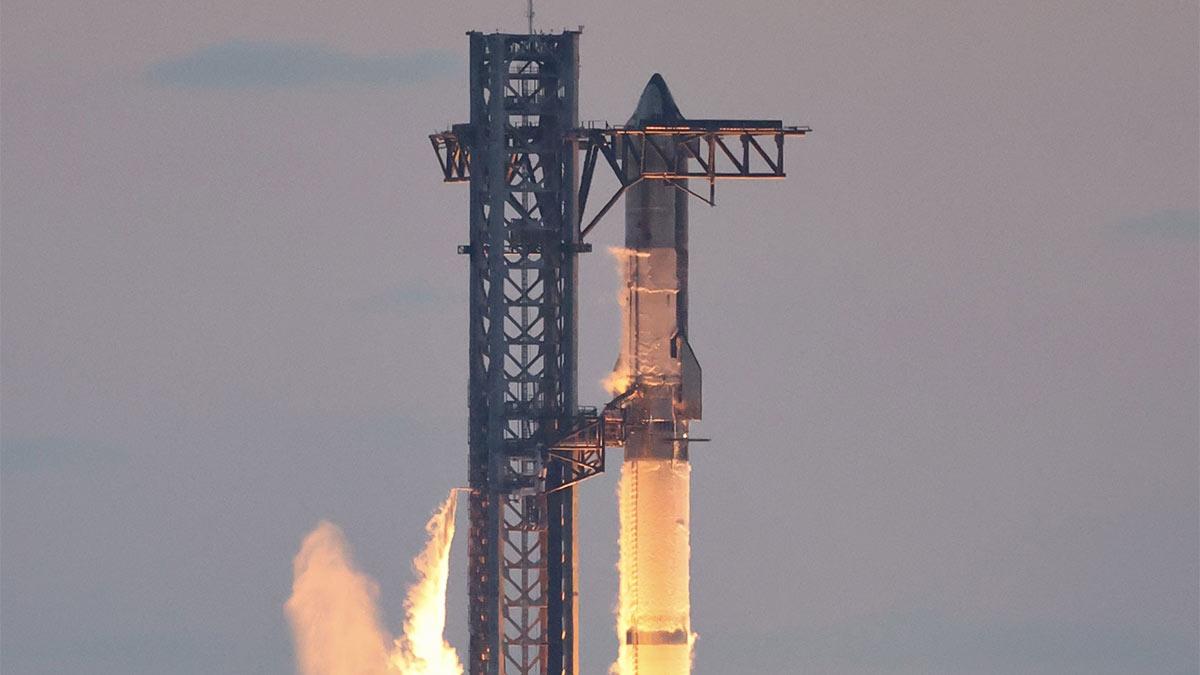The rocket flew further than previous attempts but issued leaks and started spinning out of control before it disintegrated during re-entry
For the second time, a SpaceX Starship prototype over the Indian Ocean on Tuesday destroyed another turbulent episode in Elon Musk's test flights of his ambitious rocket intended to make way for Mars colonization.
The massive and strongest rocket ever built lifted off at 6:36 pm local time from SpaceX's launch pad near a tiny Texas village that just voted to become the city of Starbase.
The first signs of trouble appeared when the Super Heavy first-stage booster exploded, unable to complete its intended splashdown in the Gulf of Mexico.
Live video subsequently showed that the top-stage Starship couldn't open the cargo bay doors, which were supposed to expel a batch of Starlink satellite "simulators."
As much as it set a higher altitude than its last two flights, the vehicle leaked and went into a frenzied spin while coasting on a suborbital path around the cosmos. It subsequently entered Earth's atmosphere uncontrollably and broke apart.
"Starship underwent a quick unscheduled disassembly," SpaceX tweeted — a familiar corporate cover term for failure — and promised followers it would study the results in order to do better next time.
Meanwhile, Elon Musk vowed to speed up the testing timeline: "Launch cadence for subsequent three flights will be quicker – about one every three or four weeks," he tweeted.
But Musk did not specify if the highly publicized live presentation about Mars, which SpaceX previously advertised, would proceed.
Only four days earlier, federal authorities had cleared the most recent Starship flight, wrapping up an investigation of previous accidents that had grounded the rocket for almost two months.
Starship's previous two test flights, which took place in January and March, ended suddenly a minute or so after launch when the rocket blew up in mid-air, dropping debris on portions of the Caribbean and severely disrupting commercial air traffic.
For Tuesday's launch, the Federal Aviation Administration increased safety buffers to accommodate wider areas potentially affected by falling debris.
Before the event, there were dozens of space buffs waiting at Isla Blanca Park on neighboring South Padre Island to see history happen. Little tour boats bobbed on the lagoon, and a live stream displayed Musk in mission control at Starbase, wearing an "Occupy Mars" T-shirt.
Piers Dawson, 50, from Australia, said AFP he was "obsessed" with the rocket and had planned his family vacation around the launch. It was his first trip to the U.S., and he brought his wife and teenage son, whom he had taken out of school to attend.
Joshua Wingate, Austin's 33-year-old tech mogul, commented on the launch day: "I know in science there's never a failure, you learn everything from every single test so that was still super exciting to see."
Read also| Affordable Satellite Internet: Starlink's ₹850 Monthly Plans Coming to India
Read also| India's PC Market Sustains Momentum with 8.1% Growth in Q1 2025


















